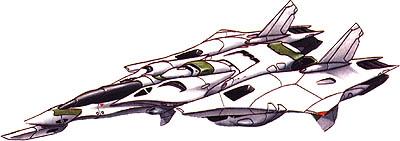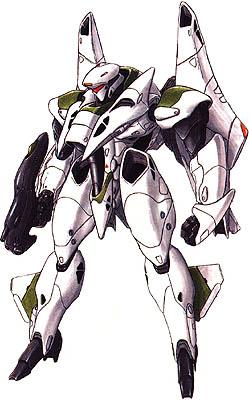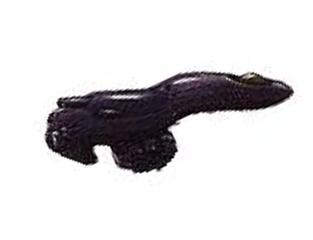


SVA/F-18 Sol Space Veritech
 |
 |
Name: Sol Fighter.
Vehicle Type: Drone Veritech Fighter.
Crew: None. Ever.
MDC by Location:
| *Torso Legs/Thrusters Arms GU-3 Gun Pod | 2ØØ 1ØØ each 1ØØ | Head Retractable Utility Arms (4 per arm) Tailerons (attatched to the legs) Backpack-style Pods (2) | 3Ø 3 each 5Ø each 2ØØ |
Speed and Statistical Data: Weapons Systems: Ø2. Jet Fighter High Powered Lasers (2): These lasers can only be used in fighter mode. They are fixed-forward only. Ø4. Hand-To-Hand Combat: The Sol Fighter can engage in melee combat rather than use a weapon. The Mecha is fairly agile and can execute most typical hand to hand combat moves, such as punches, jump kicks, leap attacks, rolling with impacts, etc. Features:Speed: 7+ (2593 mph/1621 kmph).
Operational Ceiling: Semi-Trans-Atmospheric; The craft can exit a gravity well once, and enter one an unlimited number of times, on a single fueling.
Height:7 m).7 ft (5.2 m).
Width:Length: 7 m).
Weight: 29 tons.
Physical Strength: Equal to a P.S. of 5Ø.
Cargo: A 5’×8’×8’ cavity exists in the torso/fuselage of the Mecha. In Fetch mode, the cavity is used to hold smaller items. In Bite mode, a Reflex bomb can be installed here..
Powerplant: Single Shinnakasu/P&W/Roice DTF-31 Dual-Phase Turbine Engines.
Trust System: Bleedoff from the powerplant.
Flight System: Grav Pods.Ø1. Dual Lasers: Mounted on the lead edge of the thrusters, these lasers can be used either in Jet or Battloid mode. They can traverse up to 9Ø° (outboard only), and elevate/declinate 18Ø°, giving them an effective full 18Ø° coverage area in the front of the Mecha. They can be fired independantly or in tandem.
MD: 3D6 MD per laser per blast.
Range: 2ØØØ feet (6ØØ m).
Rate Of Fire: Up to 3 attacks per melee.
Payload: Effectively unlimited.
MD: 6D6 MD per twin blast.
Range: 4ØØØ feet (12ØØ m).
Rate Of Fire: Equal to the pilot’s combined number of attacks.
Payload Effectively Unlimited.
GU-3 Gun Pod.Ø3. GU-3 Gun Pod: A funny-looking gun pod used only in Battloid Mode. It is technically a Heavy, a combination of a pair of weapons, and loosely based on the L-18/-21 Assault System.
MD:
Range:
Rate Of Fire: 4 attacks per melee with this system (either weapon).
Payload: The GU-3 was equipped with a power node, allowing the weapon to draw power directly from the Mecha.
Duration: 1D4 melee rounds. Payload: 6Ø chaff/flares. Each time the system is engaged, the system fires off Ø4 chaff/flares. |


